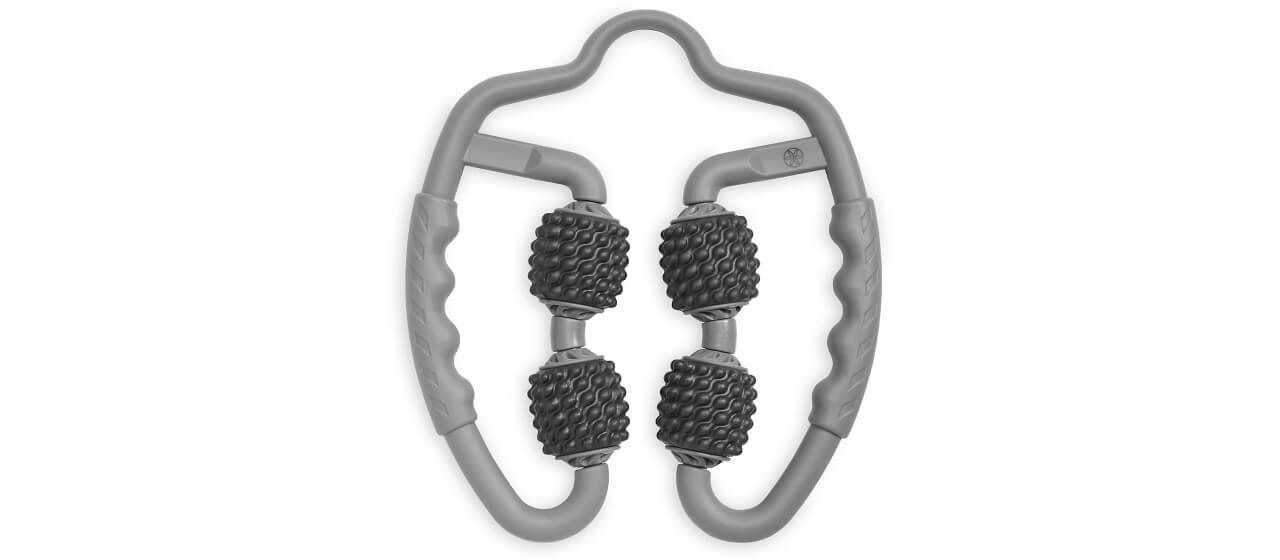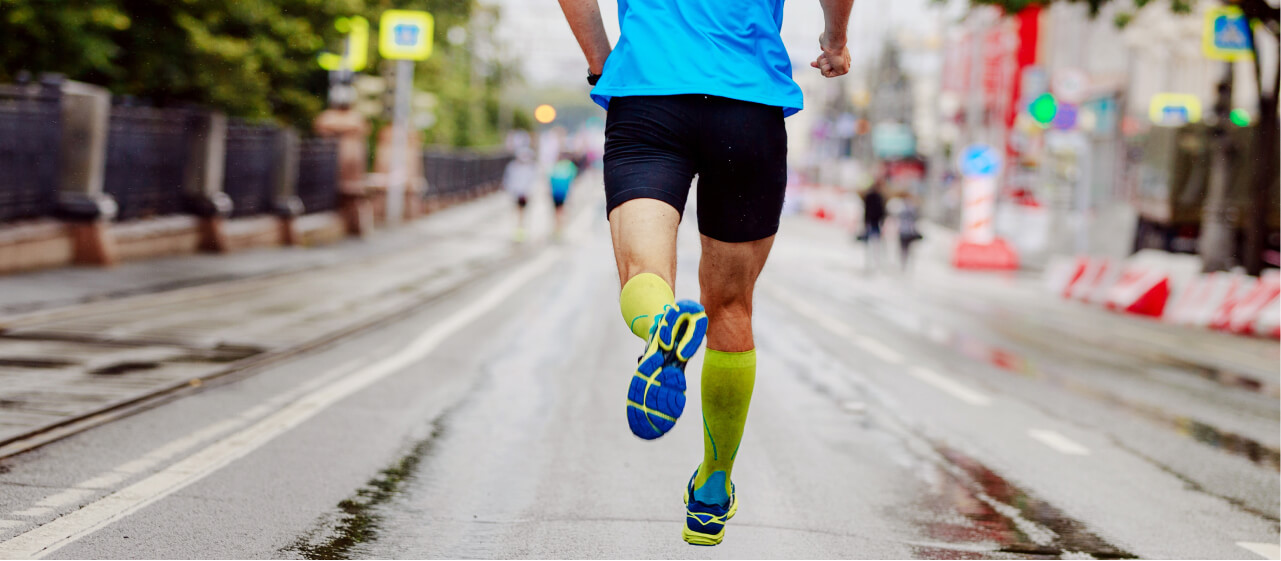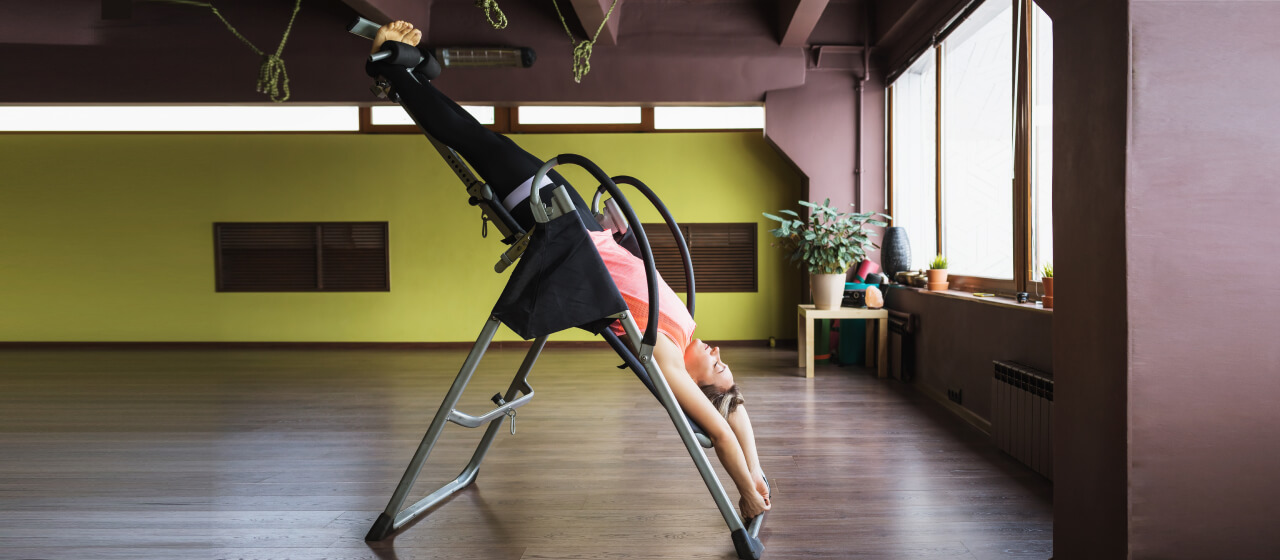Best Muscle Recovery Tools for Athletes + Post-Workout

There’s more to working out or training than simply running the field or hitting the gym. The best results come to those who take their recovery seriously. In fact, building your strength and toning your muscles depend on it! Every athlete and gym junkie will inevitably endure sore muscles. Thankfully, there are plenty of recovery tools to help.
Not only will the right sports recovery equipment safely speed up your recovery. You just might start to look forward to it! The experts at Academy Sports + Outdoors have consolidated the best muscle recovery tools. You’ll find plenty of options that fit your specific needs or fitness goals.
What Is Muscle Recovery?
Muscle recovery is a corrective process meant to help repair the stressed tissue or damaged fibers in your muscles after a workout or training session. Strength training is especially brutal on your muscles. Working the same areas day in and day out without giving your body the opportunity to recover can lead to painful injuries and a lack of real results.
A methodical post-workout recovery routine can look like this:
-
Stretching after an intense workout session — Doing so helps to soothe any muscle tension or stress built up from the workout.
-
Setting up an intentional schedule — You might focus on strength training, cardio, and active resting each for two days before repeating the cycle over again.
Why Is Muscle Recovery So Important?
If you don’t let your muscles recover, any tears or stress can lead to more dramatic inflammation and swelling. Recovery allows you to build up your strength without hindering your performance. Just remember that (as you would before starting a new fitness program) you should consult with your doctor before adding any muscle recovery tools to your routine — especially if you have chronic pain or recent injuries.
Which Muscle Recovery Tools Are Right for You?
From playing pickleball to lifting heavy weights, your body needs time to rest after. But ‘rest’ doesn’t mean you should just sit back and relax on the couch. You should be aware of all the sports recovery tools you can use to help your body ease back from that rough workout. Think about your needs in three parts:
-
Know your fitness goals: Just as fitness goals and plans are individualized, so too is recovery. Always ensure that the tools you choose support your unique fitness or training goals.
-
Know your commitment & budget: The right tools can help you get the most out of your workouts, but they won’t do anything if you don’t use them. Invest your time and money wisely!
-
Know your desired intensity: Partake in highly active recovery sessions such as foam rolling. You might opt for a more passive approach like using a topical pain reliever spray or wearing compression socks while elevating your legs.
1. Massage Wheels
Massage Wheels (also called yoga wheels) use your body weight to stretch and strengthen the muscles around your spine. These sturdy, hollow circular muscle recovery tools are widely loved by those active in yoga. Pose, lean back, or stretch with them. However you use them, they can help reduce back pain, increase flexibility, and improve your posture with regular use.

Is It Best For You?
- You have upper and/or back pain and tension
- You want to improve back flexibility
Skip This If...
- You have an injury (check with your doctor first)
- You have chronic back pain
2. Massage Balls
Because massage balls are smaller in size than other similar tools, you can vary the location and intensity to target pain points (such as a knot in your shoulder). You can also effectively reduce pain, muscle tension, and stiffness. The small size of a massage ball makes it easy to transport, too.

Is It Best For You?
- You want to increase blood flow
- You want myofascial release
- You have a specific pain point you’d like to target
Skip This If...
- You are new to recovery tools (you may want to start with a larger foam roller to get the hang of the technique)
- You want to target a large muscle group or area
3. Foam Rollers
Foam rollers are a simple-yet-effective tool for self-massaging and post-workout recovery. By applying pressure to the trigger points in your muscles, foam rolling can help release soreness and stiffness, increase blood flow, and improve your range of motion. They are incredibly versatile and relatively inexpensive depending on which kind you choose:
-
Deep Tissue Foam Roller : As the name suggests, deep tissue foam rollers get at the deeper layers of your muscle to stimulate recovery. A brief overview of our recommended product.
-
Precision Foam Roller : These foam rollers feature special patterns to precisely target specific muscle groups. A brief overview of our recommended product.
-
Vibrating Foam Roller : A vibrating foam roller is motorized to produce specific vibrations to help stimulate a wide area overall in addition to the specific muscle groups being rolled. A brief overview of our recommended product.
-
Compact Foam Roller : These foam rollers are pint-sized, making them perfect for smaller muscles or for travel. A brief overview of our recommended product.
Expert Tip:
After a workout, foam rolling can help to flush out lactic acid and other metabolic waste products that can build up in your muscles during exercise, speeding up the recovery process. Foam rollers are also great for warming up your muscles before any activity.

Is It Best For You?
- You’re looking for a deeper, targeted massage
- You want to target large muscle groups
Skip This If...
- You have a serious injury like a muscle tear or break
- You want to target small muscles and muscle groups
4. Massage Gun
The use of massage guns shows that they help increase blood circulation, stimulate the lymphatic and nervous systems, and release lactic acid buildup. An increased performance capability is the most obvious benefit. But did you know that they can also be a fantastic tool in rehabilitation treatment if you’re injured?

Is It Best For You?
- You lift heavy weights or are a more experienced athlete
- You tend to experience DOMS (Delayed Onset Muscle Soreness)
- You’re looking to replicate the feeling of massage therapy
- You want to target trigger points
Skip This If...
- You have a pre-existing medical condition or injury (speak to your doctor first)
- You are on blood thinners
- You have an inflammatory disorder
- You have varicose veins, a ligament sprain, high blood pressure, or conditions affecting blood vessels like thrombosis
5. Leg Massager
Apply consistent pressure to both sides of your legs at once with this handheld leg massager. You’ll be able to work out any knots and provide targeted pain relief. Four acupressure rollers provide deep massage and consistent pressure distribution for your thighs, calves, and even sore arms.

Is It Best For You?
- You want accurate, targeted relief for pain points
- You do most of your recovery routine at home
Skip This If...
- You want to target larger muscle groups
- You require more pressure than your arms can provide
6. Foot Roller
Foot rollers target minor aches in the small muscles in your feet and forearms. Doing so simultaneously increases their flexibility and relieves tension. Their compact size and light weight make them very transportable and easy to use whether you’re at the gym or on the road, while seated or standing.

Is It Best For You?
- You want on-the-go relief
- You want to target the small muscles of your feet or forearms
Skip This If...
- You have major tension or soreness in your feet or forearms
- You need to treat muscle groups other than those in the feet and forearms
7. Massage Bar
Massage bars feature multiple, independently spinning wheels along a bar for targeted, deep-tissue massage of your muscles. These muscle recovery tools allow you to control the pressure and location of the massage. Do so by holding the handles on either side of the massage bar and rolling it along your body. Slim and compact, massage bars are one of the easiest recovery tools to use and are also very travel-friendly.

Is It Best For You?
- You want a targeted, deep-tissue massage on your hips, glutes, legs, lower back, or feet
- You want treatment for DOMS, lumbar pain, piriformis syndrome, plantar fasciitis, runner's knee, or sciatica
- You need an on-the-go recovery tool or find foam rolling difficult
Skip This If...
- You want a recovery tool for upper back pain
- You want to target small muscles in your upper body
8. Compression Socks
Compression socks — worn either during or after exercise — can help improve circulation, decrease swelling in your calves, prevent blood clots, and relieve pain from varicose veins. They apply continuous pressure on your lower legs (also known as the bottom of your circulatory system). Doing so sends blood back to your heart.
Expert Tip:
Just make sure to use compression socks as part of a larger recovery routine. They are not a substitute for good rest, stretching, and other recovery methods.

Is It Best For You?
- You want to boost blood flow during or after exercise
- You stand a lot during the day
- You’re a distance runner
Skip This If...
- You don’t like tight or restrictive clothing
- You have a health condition that limits your ability to withstand compression
9. Inversion Table
Inversion tables relieve the pressure gravity puts on your spine, joints, nerves, and muscles by decompressing these areas. You ‘hang’ upside down in an inverted position. Most inversion tables have a range of settings so that you can slowly increase the degree to which you are inverted over time.
Expert Tip:
You may want to try out this recovery technique with a physical therapist before purchasing a table of your own.

Is It Best For You?
- You suffer from a sore back, sciatica pain, have tense back muscles, or experience back muscle spasms
- You have space in your home to devote to a larger piece of equipment
Skip This If...
- You are pregnant or have high blood pressure
- You suffer from joint diseases, such as arthritis, or have unhealed injuries or fractures
- You don’t have a lot of extra space at home
10. Stretch Strap
Increased flexibility reduces injuries. Stretch straps are a great low-resistance recovery tool! They help you achieve a deeper stretch to alleviate muscle tightness and soreness. Strengthen your muscles when you use them as you also increase your range of motion. Many of them have multiple loops and loop sizes to help you modify your positioning as your flexibility improves.

Is It Best For You?
- You want low-resistance recovery or want an easy-to-use recovery tool
- You need help with or want to improve your flexibility
Skip This If...
- You want a higher level of resistance
- You require higher intensity
11. Muscle Simulator
Electric muscle stimulators (EMS) send electrical currents through your body’s soft tissue. Doing so enhances blood circulation and increases your muscles’ performance. It also targets fast-twitching muscle fibers and forcefully contracts your muscles.
Expert Tip:
Elite athletes usually use muscle stimulators during and after exercise. These tools are particularly useful if you are trying to lessen wear and tear on a specific joint structure.

Is It Best For You?
- You require multiple settings to accommodate a range of muscle soreness
- You are looking for chronic pain relief
- You are an elite athlete
- You have clear objectives and are dedicated to a well-organized training and recovery program
Skip This If...
- You are new to working out or don’t need as much muscle stimulation (EMS might be overkill)
- You don’t have the time to dedicate to learning the proper technique (there is a somewhat steep learning curve)
- You don’t have anyone to help you (solo setup of placing the electrodes on your body can be difficult)
- You don’t want to deal with the hassle of cords
12. Compression System
You may have seen compression systems used by professional athletes or at physical therapy. However, the once medical-grade-only technology has evolved! These large boots use intermittent pneumatic compression to help relieve overall muscle fatigue by increasing circulation.
They flush metabolic waste buildup from your legs to your lymph system faster than other recovery tools like compression socks (which are more passive). Using these can shorten the amount of rest your body requires between workouts.

Is It Best For You?
- You often do back-to-back training sessions or want to incorporate passive recovery into your routine
- You do high-intensity training or are an elite athlete
Skip This If...
- You want a more affordable recovery solution
- You don’t have the time to devote to learning and using this recovery method correctly (there’s a bit of a learning curve)
13. Topical Pain Reliever Spray
Topical pain relievers utilize ingredients like methyl salicylate to create a cooling sensation. They also have non-steroidal anti-inflammatory drugs like ibuprofen to quickly reduce pain (often due to sprains, strains, and general muscle soreness) when applied to the skin. Incredibly versatile, you can apply topical pain relievers to large areas or target smaller pain points that need immediate relief.

Is It Best For You?
- You want spot-specific and quick pain relief due to strains, sprains, muscle soreness, arthritis, and more
- You want a versatile product that works for multiple areas of your body
- You want something easy-to-use
Skip This If...
- You are pregnant
- You have sensitive skin or a wound
- You’re allergic to one of the ingredients
14. Recovery Slides
No matter the training you do, your feet take a beating. Breathable, lightweight, and incredibly cushioned, recovery slides are designed to relieve your feet and arches of the impact you just put them through. They offer much more support and comfort than your average flip-flops.

Is It Best For You?
- You are a distance runner
- You participate in high-intensity training and/or sports
Skip This If...
- You participate in mostly moderate exercise
15. Exercise & Stretching Ball
Use an exercise ball for stretching, improving your stability, and strengthening your core muscles during recovery. But nowadays, you’ll find so much value in a single object! Find them in a myriad of places: the gym, your home, and the office. These incredibly versatile muscle recovery tools help improve your posture, allow you to learn how to properly lift, and increase mobility in your lower back.

Is It Best For You?
- You’re looking for an affordable recovery option
- You want to focus on your core strength and balance/stability
Skip This If...
- You have little space for it when you’re not using it
- You’re looking for other ways to strengthen your core
How Many Recovery Days Do Muscles Need?
The general rule of thumb is 48-72 hours (or two to three days). However, this actually depends on the intensity of your workout and your physical attributes. Don’t be afraid to take it slow! Most people do split workouts — meaning that they work out one area of the body per day to maximize downtime.
Have Fun Out There!
So now you know all about the wide variety of muscle recovery tools out there! There are so many ways you can combine them to create a customized post-workout recovery routine. To find your ideal combination, you can shop our sports recovery equipment selection online or in-store.